I am using IBM Bluemix to make a web service for a school project.
My project needs to request a JSON from an API, so I can use the data it provides. I use the http get method for a data set, and I am not sure if it is working properly.
When I run my code, I get the message:
Error: Protocol "https:" not supported. Expected "http:"
What is causing it and how can I solve it?
Here is my .js file:
// Hello.
//
// This is JSHint, a tool that helps to detect errors and potential
// problems in your JavaScript code.
//
// To start, simply enter some JavaScript anywhere on this page. Your
// report will appear on the right side.
//
// Additionally, you can toggle specific options in the Configure
// menu.
function main() {
return 'Hello, World!';
}
main();/*eslint-env node*/
//------------------------------------------------------------------------------
// node.js starter application for Bluemix
//------------------------------------------------------------------------------
// HTTP request - duas alternativas
var http = require('http');
var request = require('request');
// cfenv provides access to your Cloud Foundry environment
// for more info, see: https://www.npmjs.com/package/cfenv
var cfenv = require('cfenv');
//chama o express, que abre o servidor
var express = require('express');
// create a new express server
var app = express();
// serve the files out of ./public as our main files
app.use(express.static(__dirname + '/public'));
// get the app environment from Cloud Foundry
var appEnv = cfenv.getAppEnv();
// start server on the specified port and binding host
app.listen(appEnv.port, '0.0.0.0', function() {
// print a message when the server starts listening
console.log("server starting on " + appEnv.url);
});
app.get('/home1', function (req,res) {
http.get('http://developers.agenciaideias.com.br/cotacoes/json', function (res2) {
var body = '';
res2.on('data', function (chunk) {
body += chunk;
});
res2.on('end', function () {
var json = JSON.parse(body);
var CotacaoDolar = json["dolar"]["cotacao"];
var VariacaoDolar = json["dolar"]["variacao"];
var CotacaoEuro = json["euro"]["cotacao"];
var VariacaoEuro = json["euro"]["variacao"];
var Atualizacao = json["atualizacao"];
obj=req.query;
DolarUsuario=obj['dolar'];
RealUsuario=Number(obj['dolar'])*CotacaoDolar;
EuroUsuario=obj['euro'];
RealUsuario2=Number(obj['euro'])*CotacaoEuro;
Oi=1*VariacaoDolar;
Oi2=1*VariacaoEuro;
if (VariacaoDolar<0) {
recomend= "Recomenda-se, portanto, comprar dólares.";
}
else if (VariacaoDolar=0){
recomend="";
}
else {
recomend="Recomenda-se, portanto, vender dólares.";
}
if (VariacaoEuro<0) {
recomend2= "Recomenda-se, portanto, comprar euros.";
}
else if (VariacaoEuro=0){
recomend2="";
}
else {
recomend2="Recomenda-se,portanto, vender euros.";
}
res.render('cotacao_response.jade', {
'CotacaoDolar':CotacaoDolar,
'VariacaoDolar':VariacaoDolar,
'Atualizacao':Atualizacao,
'RealUsuario':RealUsuario,
'DolarUsuario':DolarUsuario,
'CotacaoEuro':CotacaoEuro,
'VariacaoEuro':VariacaoEuro,
'RealUsuario2':RealUsuario2,
'recomend':recomend,
'recomend2':recomend2,
'Oi':Oi,
'Oi2':Oi2
});
app.get('/home2', function (req,res) {
http.get('https://www.quandl.com/api/v3/datasets/BCB/432.json?api_key=d1HxqKq2esLRKDmZSHR2', function (res3) {
var body = '';
res3.on('data', function (chunk) {
body += chunk;
});
res3.on('end', function () {
var x=json.dataset.data[0][1];
console.log("My JSON is "+x); });
});
});
});
});
});
